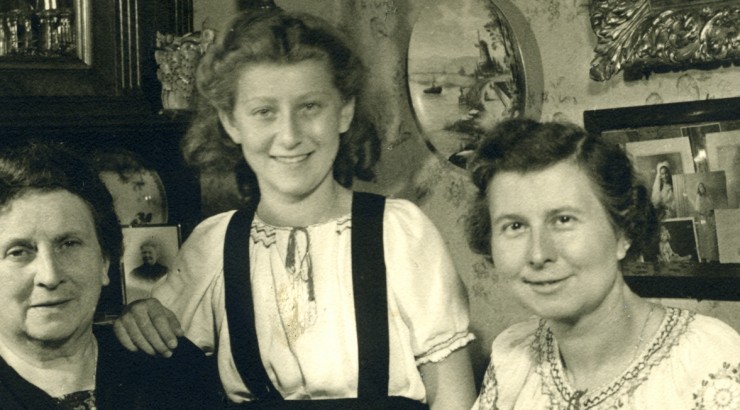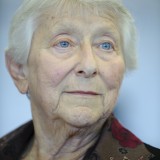Chapman University’s Nobel Prize Recipient — A Hidden Child of the Holocaust
October 11, 2013
Earlier this week we at Chapman University celebrated the news that Dr. François Englert, Distinguished Visiting Professor in Residence and founding member of Chapman’s Institute for Quantum Studies, had received the Nobel Prize in Physics. He is a person who has accomplished the truly extraordinary–and he is also a child survivor of the Holocaust.
I don’t know the specifics of Professor Englert’s childhood, only that he was born to a Belgian Jewish family in Brussels in 1932. He survived the Holocaust in several orphanages and children’s homes where his Jewish identity was concealed. He was liberated by the U.S. Army at Annevoie-Rouillon, Belgium. In 1998, he gave his testimony to the USC Shoah Foundation Institute.
His story brings to mind that of another Holocaust survivor and witness, Idele Stapholtz. Idele will be one of the speakers in a special symposium we will hold on November 7 to commemorate the 75th anniversary of
Kristallnacht
, the Night of Broken Glass.
Idele was born in Germany and experienced the terror of
Kristallnacht
as a child in a Jewish orphanage. A few days later, in the hope of bringing her to safety, Idele was sent on a
Kindertransport
to Brussels, Belgium. There, she was taken in by a Catholic mother and daughter, Marie and Germaine Goosens. As Professor Englert did, Idele too had to hide her Jewish identity–but thanks to her rescuers, Idele hid in the open.
When the Germans occupied Belgium in May 1940, Marie and Germaine went to great lengths to protect Idele. When she needed a tonsillectomy, they arranged for a doctor to perform the surgery in their home on the kitchen table. When Jews were ordered to wear the Yellow Star, a clerk at city hall told Germaine not to register Idele. That bold advice later saved Idele from deportation. The director of the Catholic High School, a nun in the order Les Dame de Marie, Madame Eulanie, accepted Idele as a student knowing she was a Jew. Idele’s best friend, Annie, and her parents also knew Idele’s secret, and, in spite of the danger, welcomed her to their home. Thanks to all of them, Idele had something close to a normal childhood, filled with love and friendship, giving her memories she treasures to this day.
In 1993, with her friend Annie by her side, Idele unveiled three plaques at Yad Vashem in Jerusalem naming Marie and Germaine Goosens; Monsieur and Madame Lannoo, Annie’s parents; and Madame Eulanie, the director of the school, as Righteous Among the Nations.
Like Miep Gies in Amsterdam, who helped to hide the Frank family and saved Anne’s diary, none of these righteous gentiles saw themselves as heroes. In their view, they were only doing what all human beings should. As Miep said: “People should never think that you have to be a very special person to help those who need you.”
When the world on Tuesday honored Professor Francois Englert with the Nobel Prize in Physics, it honored too those individuals who helped him survive the Holocaust, ordinary people who enabled a Jewish child to one day accomplish the truly extraordinary.


